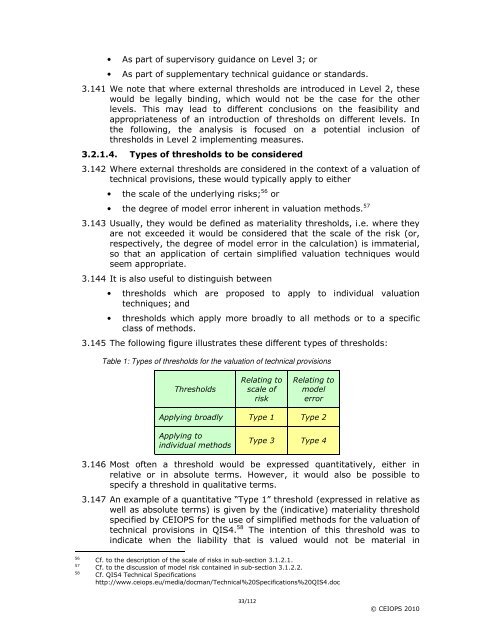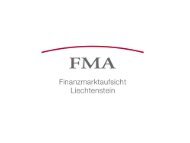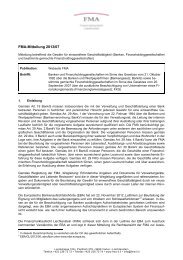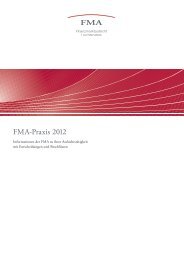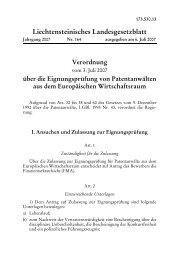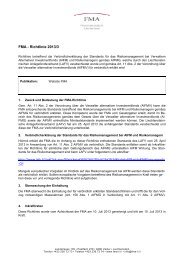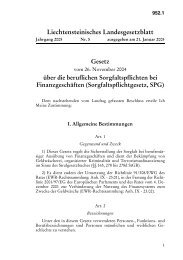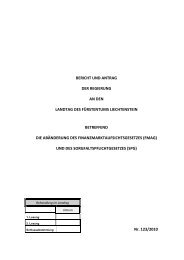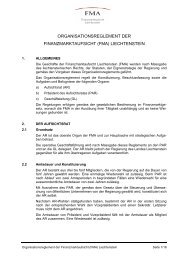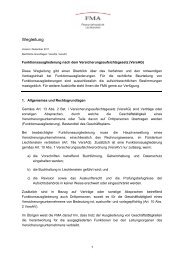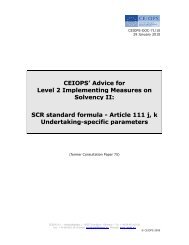CEIOPS' Advice for Level 2 Implementing ... - EIOPA - Europa
CEIOPS' Advice for Level 2 Implementing ... - EIOPA - Europa
CEIOPS' Advice for Level 2 Implementing ... - EIOPA - Europa
You also want an ePaper? Increase the reach of your titles
YUMPU automatically turns print PDFs into web optimized ePapers that Google loves.
• As part of supervisory guidance on <strong>Level</strong> 3; or<br />
• As part of supplementary technical guidance or standards.<br />
3.141 We note that where external thresholds are introduced in <strong>Level</strong> 2, these<br />
would be legally binding, which would not be the case <strong>for</strong> the other<br />
levels. This may lead to different conclusions on the feasibility and<br />
appropriateness of an introduction of thresholds on different levels. In<br />
the following, the analysis is focused on a potential inclusion of<br />
thresholds in <strong>Level</strong> 2 implementing measures.<br />
3.2.1.4. Types of thresholds to be considered<br />
3.142 Where external thresholds are considered in the context of a valuation of<br />
technical provisions, these would typically apply to either<br />
• the scale of the underlying risks; 56 or<br />
• the degree of model error inherent in valuation methods. 57<br />
3.143 Usually, they would be defined as materiality thresholds, i.e. where they<br />
are not exceeded it would be considered that the scale of the risk (or,<br />
respectively, the degree of model error in the calculation) is immaterial,<br />
so that an application of certain simplified valuation techniques would<br />
seem appropriate.<br />
3.144 It is also useful to distinguish between<br />
• thresholds which are proposed to apply to individual valuation<br />
techniques; and<br />
• thresholds which apply more broadly to all methods or to a specific<br />
class of methods.<br />
3.145 The following figure illustrates these different types of thresholds:<br />
Table 1: Types of thresholds <strong>for</strong> the valuation of technical provisions<br />
Thresholds<br />
Relating to<br />
scale of<br />
risk<br />
33/112<br />
Relating to<br />
model<br />
error<br />
Applying broadly Type 1 Type 2<br />
Applying to<br />
individual methods<br />
Type 3 Type 4<br />
3.146 Most often a threshold would be expressed quantitatively, either in<br />
relative or in absolute terms. However, it would also be possible to<br />
specify a threshold in qualitative terms.<br />
3.147 An example of a quantitative “Type 1” threshold (expressed in relative as<br />
well as absolute terms) is given by the (indicative) materiality threshold<br />
specified by CEIOPS <strong>for</strong> the use of simplified methods <strong>for</strong> the valuation of<br />
technical provisions in QIS4. 58 The intention of this threshold was to<br />
indicate when the liability that is valued would not be material in<br />
56 Cf. to the description of the scale of risks in sub-section 3.1.2.1.<br />
57 Cf. to the discussion of model risk contained in sub-section 3.1.2.2.<br />
58 Cf. QIS4 Technical Specifications<br />
http://www.ceiops.eu/media/docman/Technical%20Specifications%20QIS4.doc<br />
© CEIOPS 2010


